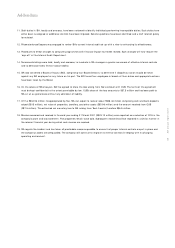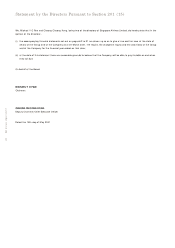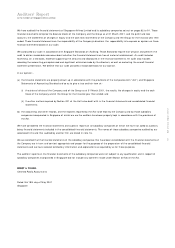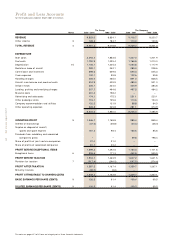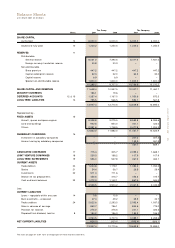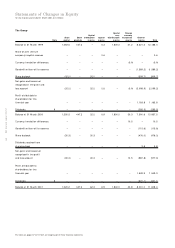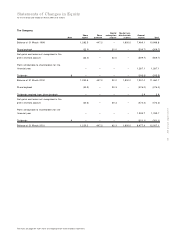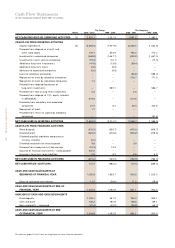Singapore Airlines 2001 Annual Report Download - page 71
Download and view the complete annual report
Please find page 71 of the 2001 Singapore Airlines annual report below. You can navigate through the pages in the report by either clicking on the pages listed below, or by using the keyword search tool below to find specific information within the annual report.
69 SIA annual report 00/01
Notes to the Financial Statements
31 March 2001
2 Accounting Policies (continued)
(f) Leased assets
Where assets are financed by lease agreements that give rights approximating to ownership (finance leases), the assets are
treated as if they had been purchased outright at the values equivalent to the principal values of total rental payable during the
periods of the leases and the corresponding lease commitments are included under liabilities. Lease payments are treated as
consisting of capital and interest elements and the interest is charged to the profit and loss account. Depreciation on the
relevant assets is charged to the profit and loss account.
Annual rentals on operating leases are charged to the profit and loss account.
Gains arising from sale and operating leaseback of aircraft are determined based on fair values. Sale proceeds in excess of fair
values are deferred and amortised over the minimum lease terms.
Major improvements and modifications to leased aircraft due to operational requirements are capitalised and depreciated over
the lease-term period.
(g) Foreign currencies
Foreign currency transactions are converted into Singapore dollars at exchange rates which approximate bank rates prevailing at
dates of transactions, after taking into account the effect of forward currency contracts which expired during the financial year.
All foreign currency monetary assets and liabilities are stated on the balance sheet at year-end exchange rates. Gains and losses
arising from conversion of current assets and liabilities are dealt with in the profit and loss account.
For the purposes of the group financial statements, the net assets of the foreign subsidiary companies, associated companies
and joint venture companies are translated into Singapore dollars at the exchange rates ruling at the balance sheet date. The
resulting gains or losses on exchange are taken to foreign currency translation reserve.
(h) Stocks
Stocks are stated at the lower of cost and net realisable value. Cost is determined on either a first-in-first-out basis or weighted
average depending on the nature of the stocks.
Work-in-progress is stated at cost plus estimated attributable profit.
(i) Aircraft maintenance and overhaul costs
Provision for costs of engine overhaul and heavy maintenance visits is made on the basis that engine overhaul and heavy
maintenance visits for aircraft are required every four years, and these are charged evenly throughout the period.
In August 2000, the Institute of Certified Public Accountants of Singapore (ICPAS) issued Statement of Accounting Standard
(SAS) 31, Provisions, Contingent Liabilities and Contingent Assets, which sets out criteria for the recognition of provisions and
other matters. The Company will implement SAS 31 effective 1 April 2001. As a result, the Company will modify its accounting
policy to recognise aircraft maintenance and overhaul costs on an incurred basis.
The Company will recognise the retrospective effect of adopting SAS 31 as a change in accounting policy as of 1 April 2001.
The cumulative adjustments for prior years will be made to the opening general reserves of the Group and the Company
respectively in the next financial year.


